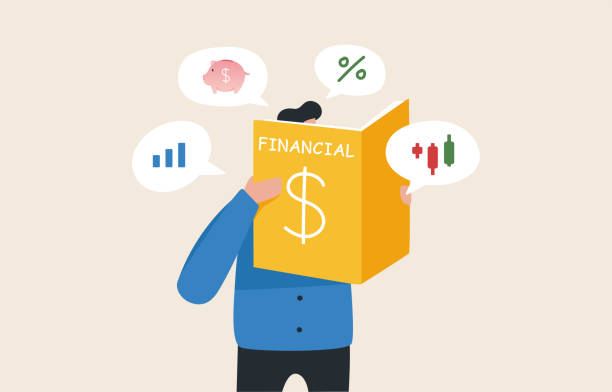Introduction
In today’s financial landscape, personal loans have emerged as a popular and flexible borrowing option. They can be used for a variety of purposes, from consolidating debt to funding major life events. However, before you apply for a personal loan, it’s important to understand how they work, their benefits, drawbacks, and how to make the most of this financial tool.
What is a Personal Loan?
A personal loan is a type of unsecured loan that allows you to borrow a fixed amount of money, typically repaid in monthly installments over a predetermined period. Unlike secured loans, such as mortgages or auto loans, personal loans do not require collateral. Instead, approval is based on factors such as your credit score, income, and financial history.
Common Uses for Personal Loans
Personal loans are versatile and can be used for a variety of purposes. Some of the most common uses include:
- Debt Consolidation: Many borrowers use personal loans to combine multiple debts into a single payment with a lower interest rate, simplifying their finances and potentially saving money on interest.
- Home Improvement Projects: Personal loans can help finance home renovations or repairs, especially if the project is too small to warrant a home equity loan.
- Medical Expenses: Unexpected medical bills can strain your budget. Personal loans offer a way to cover these costs while managing your payments over time.
- Major Purchases: From appliances to electronics, personal loans can fund significant purchases when saving up isn’t feasible.
- Weddings and Events: Planning a wedding or another milestone event can be expensive. A personal loan can cover costs like venue rentals, catering, and decorations.
- Education Costs: While student loans are specifically designed for educational expenses, some borrowers use personal loans to cover tuition, books, or other related costs.
How Personal Loans Work
When you apply for a personal loan, the lender evaluates your financial profile to determine whether you qualify. If approved, you’ll receive a lump sum that you’ll repay in fixed monthly installments, including interest, over the loan term.
Key components of a personal loan include:
- Loan Amount: The sum you borrow, typically ranging from $1,000 to $50,000 or more, depending on the lender and your creditworthiness.
- Interest Rate: The cost of borrowing, expressed as a percentage. Rates can be fixed or variable, though fixed rates are more common for personal loans.
- Loan Term: The length of time you have to repay the loan, often between one and seven years.
- Fees: Some lenders charge fees, such as origination fees, which are a percentage of the loan amount, or late payment penalties.
Types of Personal Loans
Personal loans come in several types to suit different needs and financial situations:
- Unsecured Personal Loans: These loans do not require collateral and are based on your creditworthiness.
- Secured Personal Loans: These loans are backed by an asset, such as a car or savings account. They often come with lower interest rates but carry the risk of losing your collateral if you default.
- Fixed-Rate Loans: The interest rate remains constant throughout the loan term, making it easier to budget for monthly payments.
- Variable-Rate Loans: The interest rate fluctuates based on market conditions, potentially leading to lower initial rates but higher costs if rates rise.
- Debt Consolidation Loans: Designed specifically for combining multiple debts into one manageable payment.
Benefits of Personal Loans
Personal loans offer several advantages that make them an attractive option for many borrowers:
- Flexibility: You can use a personal loan for nearly any purpose, unlike specialized loans that are tied to specific expenses.
- No Collateral Required: With unsecured loans, you don’t need to risk losing valuable assets.
- Predictable Payments: Fixed interest rates and set terms make it easy to plan your budget.
- Quick Access to Funds: Many lenders offer fast approval and disbursement, with funds available within a few days.
- Debt Management: Consolidating high-interest debts with a lower-rate personal loan can simplify payments and reduce overall costs.
Drawbacks of Personal Loans
While personal loans can be beneficial, they also come with potential downsides:
- Interest Costs: Depending on your credit score and the lender, interest rates can be high, especially for borrowers with poor credit.
- Fees and Penalties: Origination fees and prepayment penalties can add to the cost of the loan.
- Impact on Credit Score: Missing payments or taking on too much debt can negatively affect your credit score.
- Risk of Overborrowing: The ease of obtaining a personal loan might lead some borrowers to take on more debt than they can manage.
How to Qualify for a Personal Loan
Eligibility for a personal loan depends on several factors:
- Credit Score: A higher credit score improves your chances of approval and access to better interest rates. Most lenders require a score of at least 600, though some cater to borrowers with lower scores.
- Income: Lenders want to ensure you have a steady income to repay the loan. They may require proof of employment or other sources of income.
- Debt-to-Income Ratio: This measures your monthly debt payments against your income. A lower ratio indicates better financial health and increases your approval chances.
- Employment History: A stable work history can demonstrate reliability to lenders.
Steps to Apply for a Personal Loan
If you’re considering a personal loan, follow these steps:
- Evaluate Your Needs: Determine how much you need to borrow and why.
- Check Your Credit Score: Review your credit report and address any issues before applying.
- Compare Lenders: Research banks, credit unions, and online lenders to find the best terms and rates.
- Prequalify: Many lenders offer prequalification, which gives you an estimate of your loan terms without affecting your credit score.
- Gather Documentation: Be prepared to provide proof of income, employment, identity, and other necessary documents.
- Apply: Complete the application process, either online or in person, and await approval.
Tips for Managing a Personal Loan
Once you’ve secured a personal loan, it’s crucial to manage it responsibly:
- Create a Repayment Plan: Budget for your monthly payments and prioritize them in your financial plan.
- Avoid Late Payments: Set up automatic payments or reminders to ensure timely payments.
- Pay More When Possible: Paying extra can reduce the loan term and save on interest costs.
- Monitor Your Credit: Regularly review your credit report to ensure the loan is reported accurately.
Alternatives to Personal Loans
Before committing to a personal loan, consider other options that might be more suitable for your needs:
- Credit Cards: For smaller expenses, a credit card might be more convenient, especially if you can pay off the balance quickly.
- Home Equity Loans: If you own a home, a home equity loan or line of credit may offer lower interest rates.
- Borrowing from Family or Friends: This option can avoid interest costs but requires clear communication and trust.
- Employer Advances: Some employers offer short-term loans or salary advances to help with unexpected expenses.
Conclusion
Personal loans are a powerful financial tool when used wisely. They offer flexibility, fast access to funds, and the ability to manage a variety of financial needs. However, it’s essential to weigh the benefits against the potential drawbacks, such as high interest rates and fees. By understanding how personal loans work and taking steps to qualify and manage them responsibly, you can make informed decisions that support your financial goals. Whether you’re consolidating debt, funding a major purchase, or handling unexpected expenses, a personal loan could be the solution you need to achieve your objectives.

